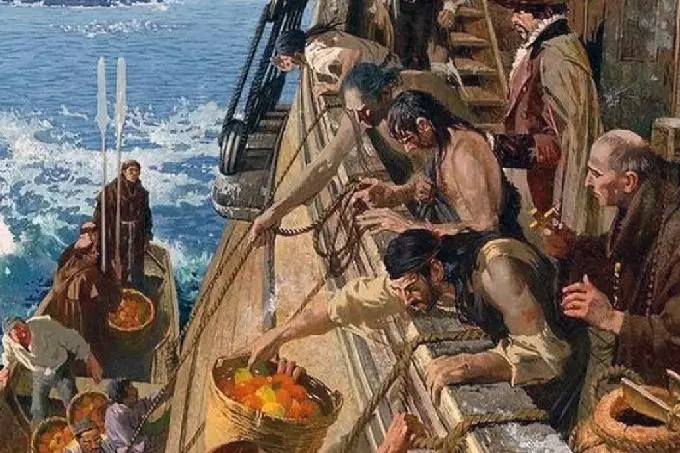Why didn’t sailors catch fish even when they ran out of food?

Fish is a nutritious and healthy product: it is rich in protein, vitamins, and minerals. However, ancient seafarers tried not to eat fish caught during the expedition, even if they experienced a shortage of fresh food. And if they did, it was at their own risk. Why?
Silver and flies on the lookout for health
The first alarm goes back to 650: Chen Tsang-shi, a Chinese doctor, recorded the death of a man, and the cause was a yellowtail fish. There was no wide exchange of information at that time, and mankind accumulated similar experience gradually, learning from its own mistakes. By the 16th century, a large-scale study of the potentially dangerous fish had already appeared. The author was the chronicler of the Spanish court, Pietro Martire d’Anguiera. He analyzed the testimonies of sailors who sailed with Christopher Columbus, Vasco de Gama, Hernan Cortez, and Fernand Magellan in the Caribbean and other warm seas.
The results of consuming fish caught during the voyage were various gastroenterological and neurological disorders, which can occur even one hour or six hours after a meal. Even with small portions, a person experienced stomach pain, headache, dizziness, vomiting, diarrhea, numbness or tingling, and in the worst cases muscle paralysis, coma and, often, death.
James Morrison, the second bosun on the British ship Bounty, kept a detailed diary where he said: “Among the fish there is a species of sea eel of a brownish color with a green border around the fins from head to tail. It can be caught near the reefs; for some this fish is poisonous: if eaten, it causes excruciating pain, while others feel no effects, and the natives do not know whom it will affect until they have eaten it.”
Indeed – neither sailors nor natives could not determine what kind of fish will cause a blow to health, because it was not a delicacy known inedible species – the “enemy” became the usual delicacies. That is why the easiest thing was not to catch it at all.
Those who were willing to take the risk first put a silver coin on it – if it turned black, then the fish was considered spoiled. Some tried another way: leaving some of the fish out in the open, people waited to see if flies would land on it. In this case, the fish could be eaten, but if even the insects shunned it, so should the people.
But why does delicious and fresh fish become unfit for food? Until the middle of the 20th century there was no answer.
The poison of the Caribbean
Many cases of poisonings with similar symptoms were reported in Cuba in the 18th and 19th centuries. Doctors suggested that shellfish (“cigua” in Spanish) were to blame, and they called the disease ciguatera. And in 1961, scientists at the University of Hawaii were finally able to identify the poison. Continuing the tradition of Cuban researchers, they called it “ciguatoxin.
And while the vast majority of ciguatera outbreaks occur along the coasts of the South Pacific and Caribbean, the toxin has been found in the tissues of about four hundred fish species that are found in seas between 35° north and 34° south latitude. All of these fish live on reefs, at depths of no more than 60 meters.
The source is single-celled algae, dinoflagellates of the species Gambierdiscus toxicus, which live in warm water near coral reefs. They are eaten by small fish, which then become food for larger fish and thus can end up in the human body.
Yet the toxin is harmless to the fish themselves: evolution seems to have conceived it as a super-weapon solely against humans. Ciguatoxin has no color, taste or smell. Stomach juices do not digest it, and heating and freezing do not kill it. It remains in the body for years, which can lead to relapses at any time. And what’s more: there is no immunity to it, and no antidote has yet been found.
Chief, it’s all gone
What should you do if you feel symptoms similar to ciguatera after a fish meal? You should immediately start drinking a lot of water and preferably induce vomiting: this will reduce the concentration of toxins in the body. At the same time you should consult a doctor – although there is no cure for ciguatera, but you can at least lessen the effects.
And the best treatment is prevention. Going on a trip to reefs in tropical waters, do not eat fish: even in restaurants, no one can guarantee that it is not infected. According to 2015 data, between 20,000 and 50,000 people go to hospitals each year with symptoms of ciguatera! Among the most famous cases is the poisoning of Nobel Prize-winning writer Saul Bellow. In 1994, after tasting red siguatera while on vacation on the island of St. Maarten, he nearly died. You can read about it in his novel Ravelstein,




